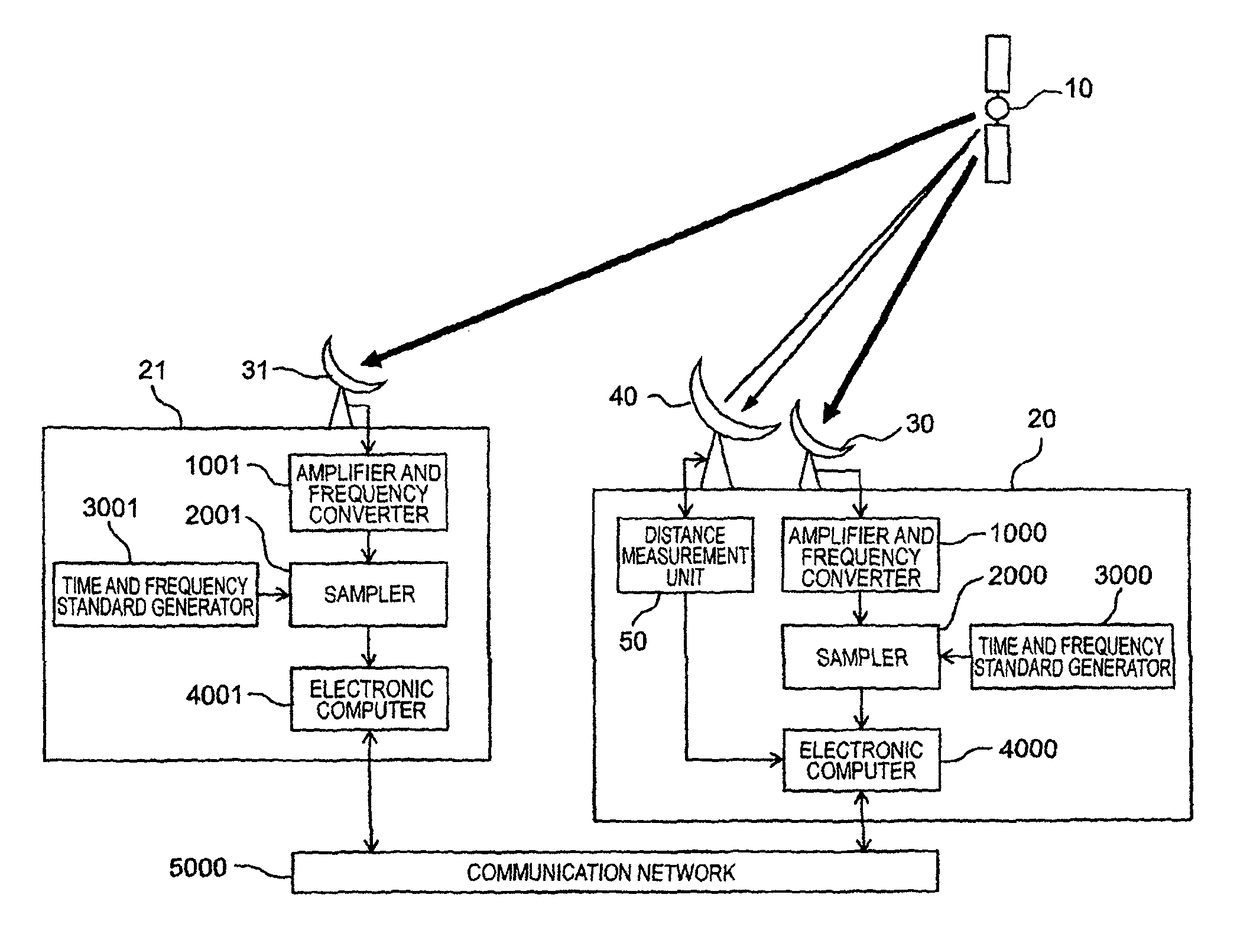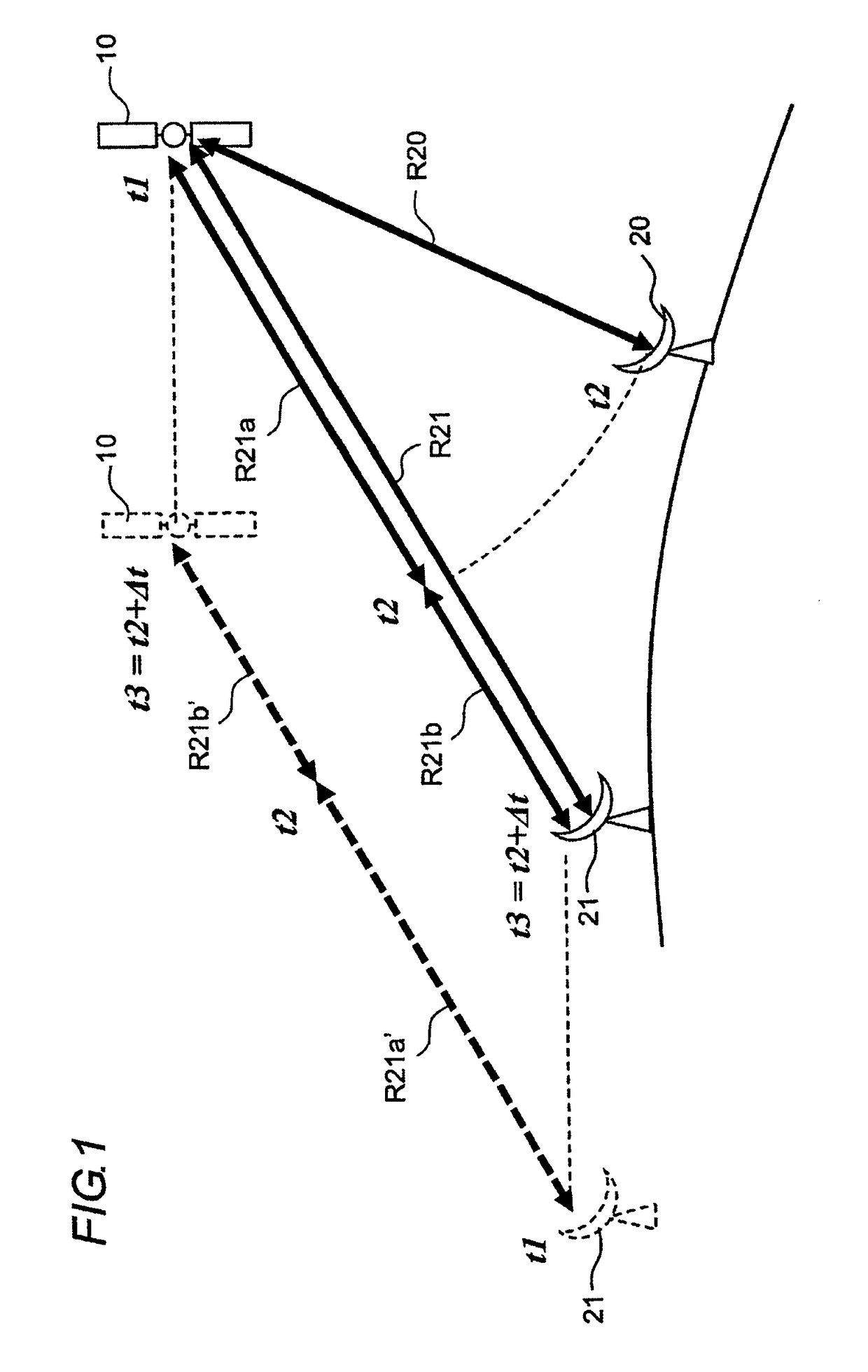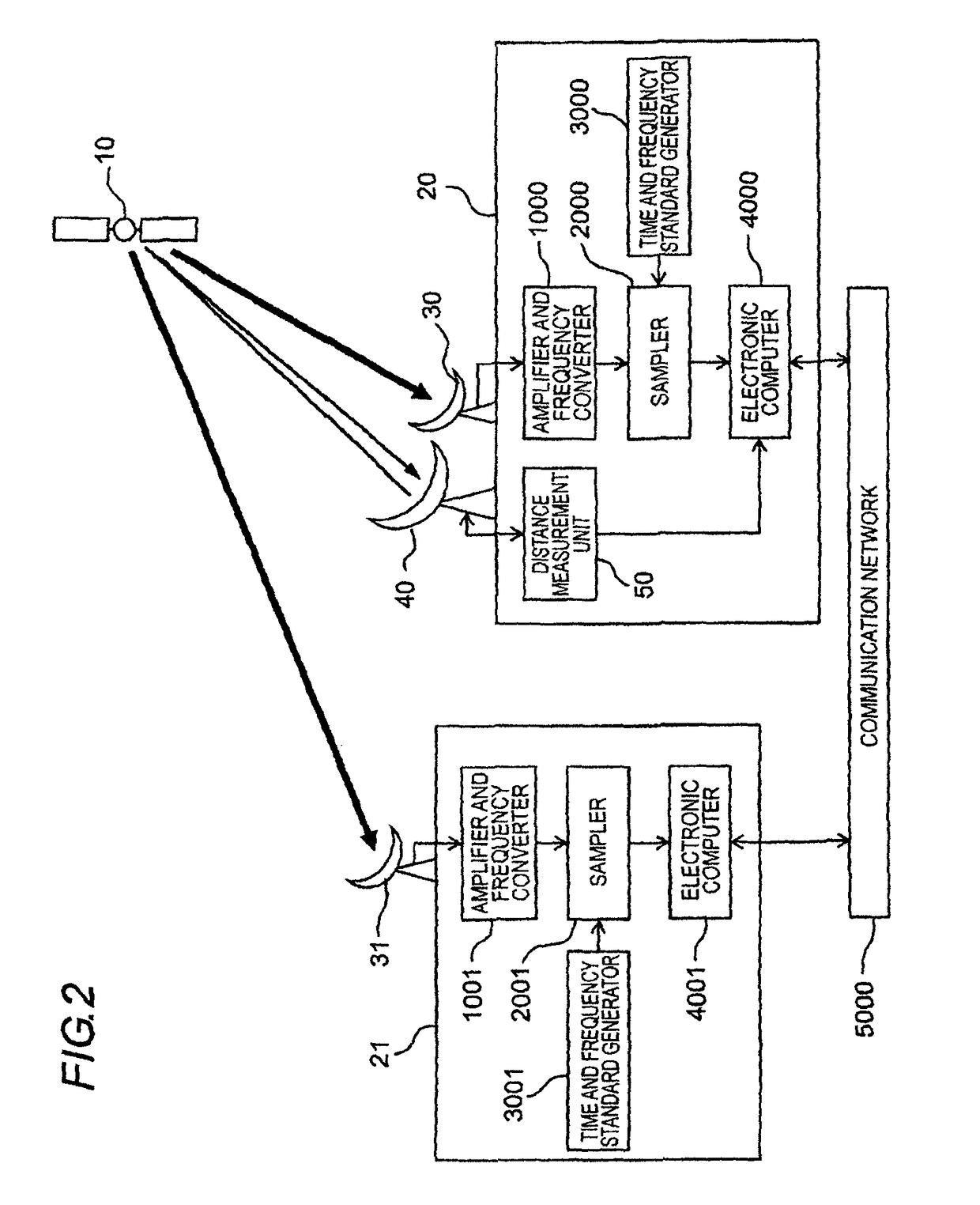Position measurement system for geostationary artificial satellite
a technology for positioning measurement and artificial satellites, applied in the direction of instruments, cosmonautic vehicles, and reradiation, etc., can solve the problems of inability to re-transmit reference signals, large distance from ground stations to satellites, and substantial equipment costs, etc., and achieve the effect of simple equipmen
- Summary
- Abstract
- Description
- Claims
- Application Information
AI Technical Summary
Benefits of technology
Problems solved by technology
Method used
Image
Examples
example)
[0047](Calculation Example)
[0048]The 1-PPS output of the time and frequency standard generator is delayed by ΔTgps_rcvr with respect to Coordinated Universal Time (UTC), and the 1-PPS signal outputted by the time and frequency standard generator takes a time ΔT1pps_cable_delay to propagate through the cable and to be inputted to the sampler. Thus, in a case where the times in the sampler are set taking the 1-PPS signal as reference, the times held in the sampler are delayed with respect to UTC by:
ΔTclock_delay=ΔTgps_rcvr+ΔT1pps_cable_delay.
[0049]Taking ΔTclock_delay_x as the delay of the times held in the sampler 2000 of the ground station 20 (X station) with respect to UTC, and ΔTclock_delay_y as the delay of the times held in the sampler 2001 of the ground station 21 (Y station) with respect to UTC, then the clock of the Y station is delayed by ΔTclock with respect to the X station, as follows:
ΔTclock=ΔTclock_delay_y−ΔTclock_delay_x (Expression 1).
[0050]Herein, Trng_x is the time...
PUM
 Login to View More
Login to View More Abstract
Description
Claims
Application Information
 Login to View More
Login to View More - R&D
- Intellectual Property
- Life Sciences
- Materials
- Tech Scout
- Unparalleled Data Quality
- Higher Quality Content
- 60% Fewer Hallucinations
Browse by: Latest US Patents, China's latest patents, Technical Efficacy Thesaurus, Application Domain, Technology Topic, Popular Technical Reports.
© 2025 PatSnap. All rights reserved.Legal|Privacy policy|Modern Slavery Act Transparency Statement|Sitemap|About US| Contact US: help@patsnap.com



